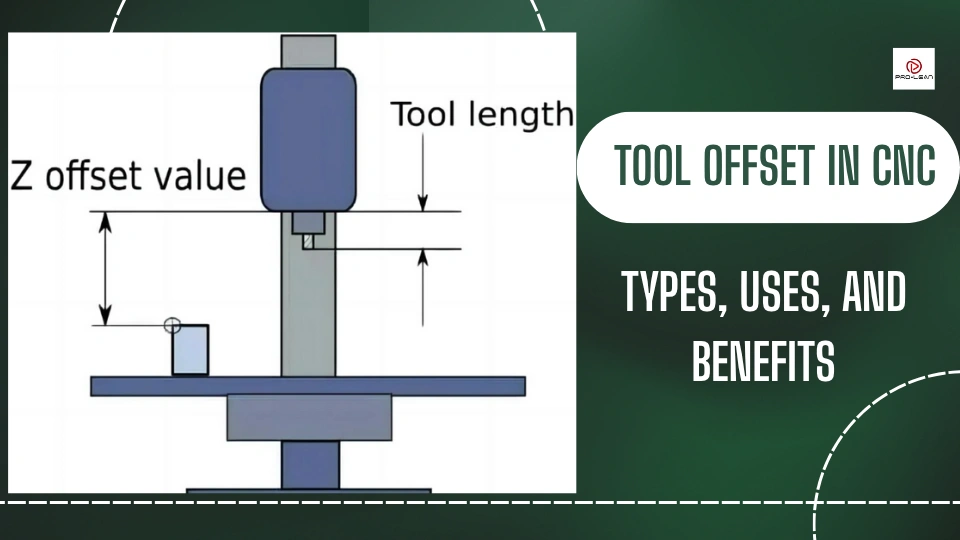
Tool offset
Tool offset is a common term in CNC machining that refers to the programmed disparity between the actual position of the tool and the reference point of the CNC machine. It is an essential condition or consideration in CNC machining because there are bound to be differences in tool size (length and radius) and wear.
With tool offset, CNC machinists are able to ensure precise and repeatable results, which are the hallmarks of modern manufacturing.
Indeed, accuracy, efficiency, and quality are non-negotiable for today’s CNC machined parts. Businesses that use CNC machined parts, from medical to aerospace, want assurance that parts are of the highest quality. Tool offset is one of those rarely discussed elements, yet it has significant bearing on accuracy, quality, and efficiency in offset machining processes.
Modern precision machining is effective and relevant with understanding of how tool offset works. Tool offset is a machining practice that helps the CNC machine decipher the size and position of the tool.
Types of tool offset that ensure this level of accuracy and precision include tool length offset, tool radius offset, tool nose radius offset, wear offset, and geometry offset. These offsets can be set using various principles including the manual touch-off method, probe method, and tool pre-setter or offline technique.
This article will delve into the world of tool offset in CNC machines. From implementing tool offset to understanding the importance of this concept, every relevant thing you need to know for better CNC Machining Services will be explained here.
What Is Meant By Tool Offset?
Tool offset can be considered as a GPS for the CNC machine regarding the position and geometry of the tool. It works in tandem with the machine offset, which is related to the internal reference coordinates of the CNC machine.
It is a way of compensating for the differences in the lengths and other parameters of tools used in the CNC machine in regards to the workpiece coordinate system and tool coordinate system.
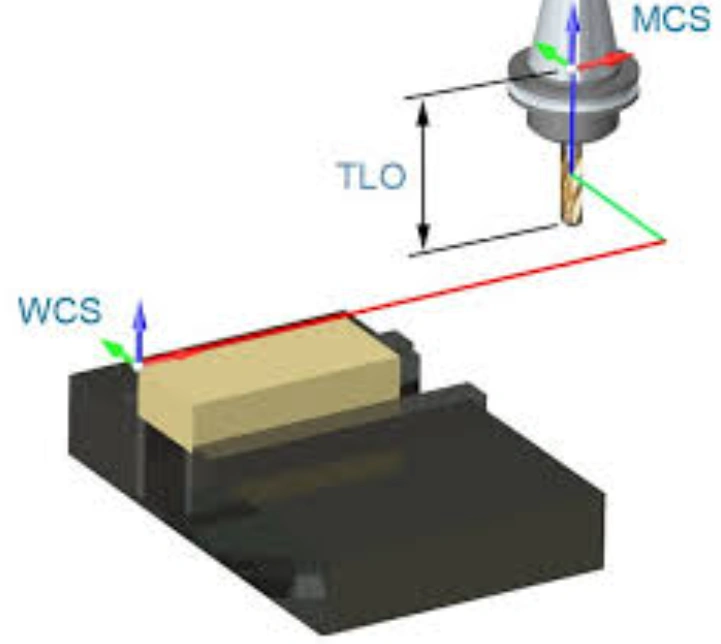
Workpiece and cutting tool positions
It is called offset because it is the difference between the zero position as recognized by the CNC machine and the actual position of the tool.
Imagine the CNC machining of an engine block using different types of cutting tools – end mill, chamfer tool, drill, and so on. Each of these tools has a different radius, geometry, and length.
If the CNC machine wasn’t equipped with tool offset (a means to tell where the tool is and its size), the engine block would be damaged within seconds of machining. But with tool offset, the programmer or machinist can easily swap tools and produce the part with surgeon’s precision.
A relationship to remember in line with tool offset is;
Total Height = fixture height + work height + tool height
Different Types Of Tool Offset
The types of tool offset are the secret behind CNC precision machining – each ensuring that the CNC machining works exactly as the programmer or machinist envisaged.
A tool offset can be either positive or negative, depending on machining practices and the specific machine. The specific types of tool offset are tool length offset, tool radius offset, tool nose radius offset (for lathes), wear offset, and geometry offset.
Tool Length Offset
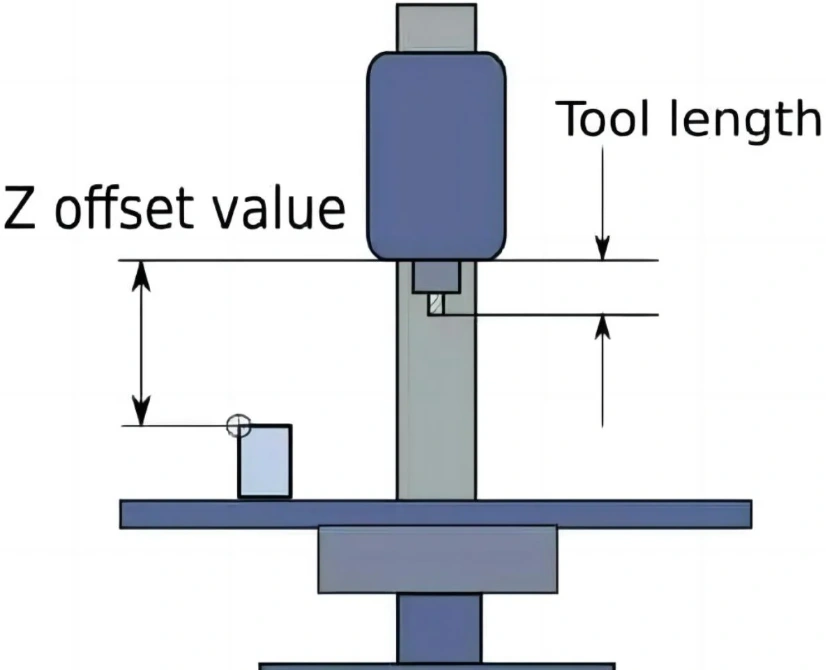
Tool length offset
This is the most common type of tool offset in CNC machining. Its function is to compensate for the differences in tool length to ensure accurate depth of cut. Operators and programmers use this offset to accurately indicate the distance between the workpiece surface and the cutting tool tip.
Tool Radius Offset
The tool radius offset is equally critical in CNC machining processes because it caters for the differences in the sizes of cutting edges of cutting tools. The result of ensuring this offset is accurately machined contours and cutting paths to match the designed geometry requirements.
This offset is critical in CNC machining considering the correlation between tool geometry and machinability of material and relation with CNC machining.
On the CNC machine tool radius offset is used for tool radius compensation, a CNC programming function that uses G-codes.
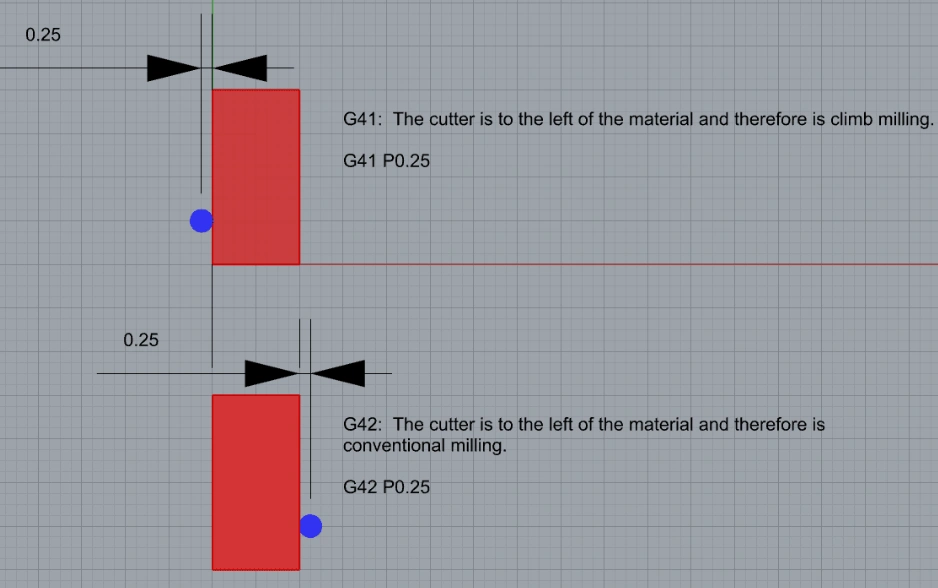
Tool radius compensation
Tool Wear Offset
The wear offset considers the fact that cutting tools undergo wear over time due to the contact with materials, which results in dimensional changes. The offset adjusts the tool accordingly to ensure the cuts are always accurate.
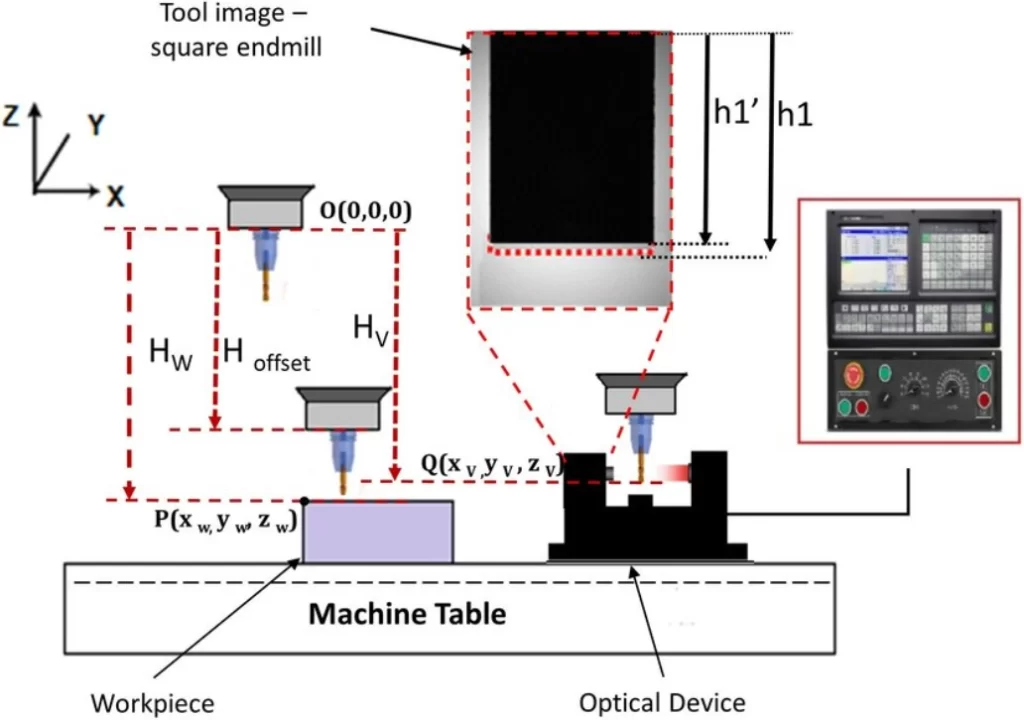
Tool wear adjustment
Tool Geometry Offset
The geometry offset is crucial for the normal variations in tool shapes and geometry. Regardless of the deviation of the actual tool’s geometry from the programmed geometry, the machinist can still attain accurate cuts with geometry offset. Changes in tool dimensions can be quickly accommodated in CNC machining without an effect in accuracy.
Try Prolean Now!
The Importance Of Tool Offset In CNC Manufacturing
Tool offset is essential in CNC machining, and therefore expertly used at ProleanTech. It allows the CNC machine to decipher the specific position and dimensions of the cutting tool. This ensures accurate and consistent production of machined parts.
Tool offset helps specify tool length, tool radius, assign program zero, and size on the CNC machine.
Specifying Tool Length
For CNC machining parts, the machinist would find it difficult to predict the length of every tool in a CNC program. With the tool length compensation capability, the CNC program can overlook the tool length. This can be remedied during setup with the machinist measuring the tool’s length and combining this with the respective offset.
Specifying Tool Radius
When using a milling tool’s periphery to machine a workpiece, the programmer may find it difficult to use the tool’s size to generate a correct toolpath. The tool size is bound to change, most likely due to sharpening.
The programmer can use the cutter radius compensation to overlook the tool radius during program preparation. The machinist can merge the size of each tool to the tool offset – an easier task than adjusting the program everytime.
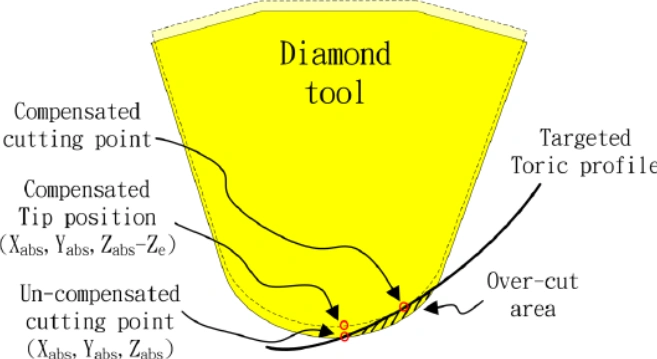
Tool nose radius compensation
Sizing On The CNC Machine
Another importance of the tool offset in CNC machining is to maintain tight CNC machining tolerances required for machined components, particularly turning centers. Even with the tool radius and length compensation intact, tool adjustments or wear can still affect the machined part’s size.
Operators of turning centers can use tool offset to easly get the specified part’s size. For example, the machinist can engage the offset to change the diameter of a shaft from 20.04 mm to 20.00 mm.
What Is The Difference Between Work Offset And Tool Offset?
In comparing tool offset and work offset, the emphasis is that precision in CNC machining is a result of more than just the tool – the workpiece also matters. The two offsets are different because the work offset focuses on the workpieces’ axes and origin.
The work offset comes in handy during complex machining tasks. It allows for the repositioning of the workpiece without loss of accuracy.
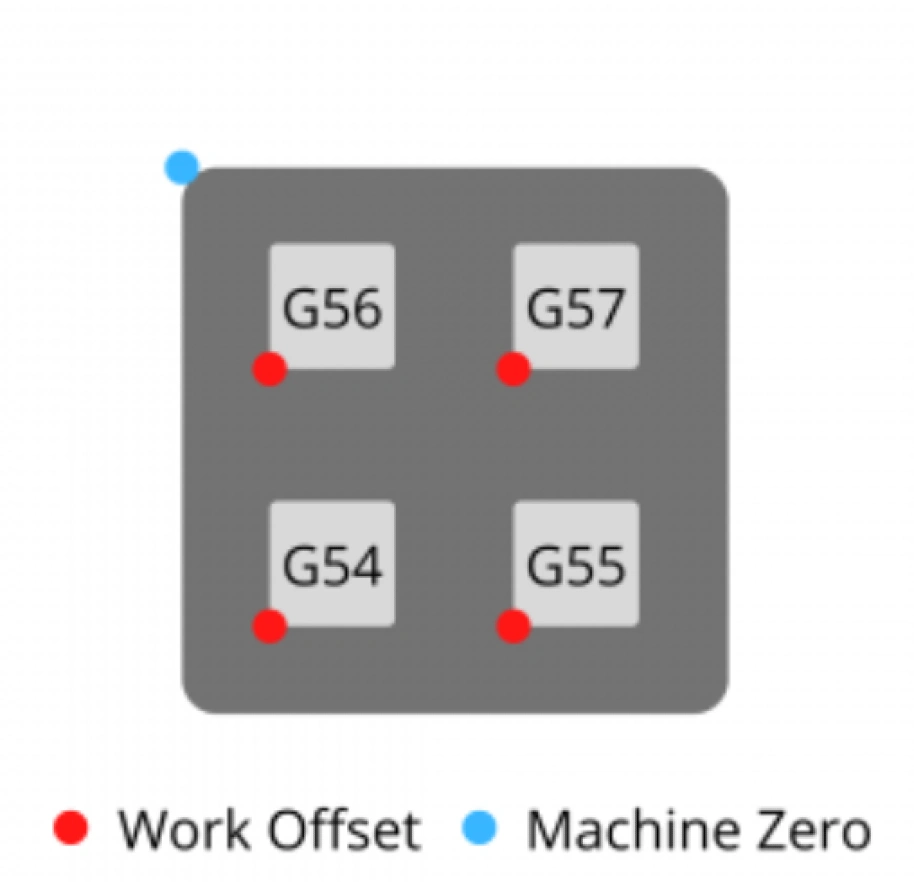
Work offsets
As seen in the CNC Machining Explained guide, workpiece and cutting tool management is different, so each must be offset separately.
Try Prolean Now!
How To Set And Adjust Tool Offset
Tool offset techniques are mainly the automatic tool setter, offline tool presetter, and the manual touch-off method. The speed and accuracy of each varies, and so are their preferences among manufacturers.
Regarding how to set and adjust tool offset, the approach depends on which of these approaches one is using. Let’s break it down for each.
-
Automatic Tool Setter
In this method, the CNC machine has an integral device for tool offsetting. The tool comprises a measurement arm with a probe tip. When this probe tip is extended, it meets the tip of the cutting tool in two perpendicular points. This is how the X and Z offsets are directly measured.
An example of a probe used for automatic tool setters is shown below.
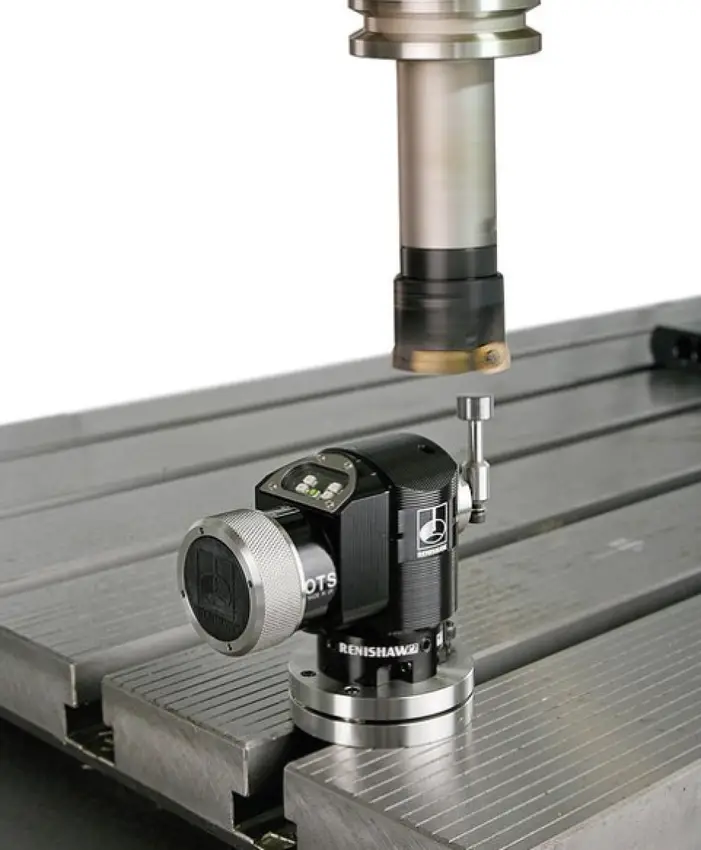
Automatic tool setter
The automatic tool setter method is the most preferred for multi-axis CNC machining. It is highly precise, repeatable, and accommodates angled tools, aspects that are critical in the complex multi-axis CNC machining.
-
Offline Tool Presetter
This method entails measuring the tools using an offline presetting device to determine the distance between the spindle and the tip of the cutting tool.
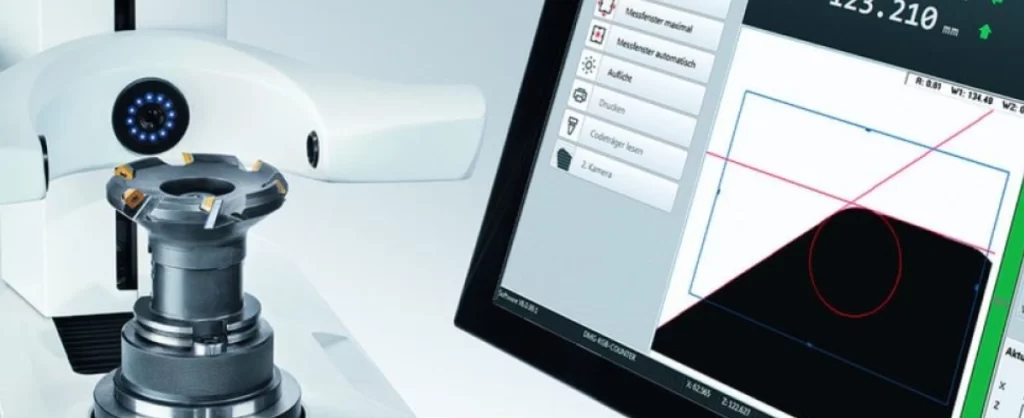
Offline tool presetting
-
Manual Touch-off Method
The manual touch-off method is characterized by bringing the workpiece and cutting tool into contact during the first instance of CNC machining. The tool length offset is then measured manually using a special machine, such as the one displayed below. This method is considered relatively time-consuming.
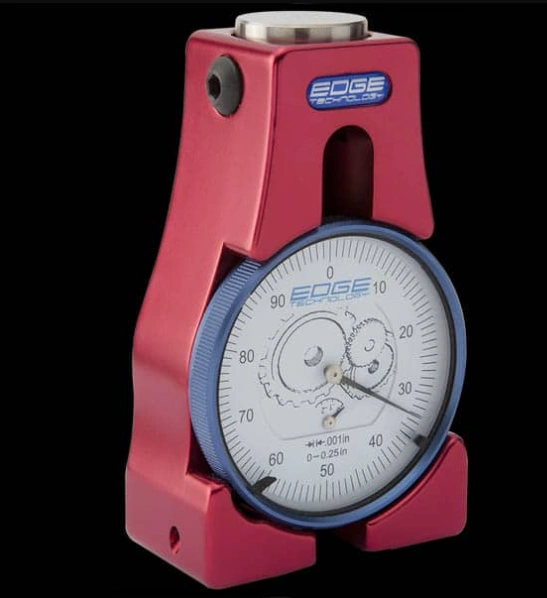
Tool length setter device
How To Calculate Tool Offset?
Calculating the tool offset entails measuring the real position of the cutting tool in comparison to the reference position of the CNC machine. For instance, if you are measuring the tool length offset, the two points to consider are the machine’s reference surface and the tip of the cutting tool.
The measuring technique is selected from the three discussed above – offline tool presetter, manual touch-off, and automatic tool setter.
What Does The Offset Tool Do?
Once any tool in a CNC machine assumes length, wear, geometry or any other offset values in reference to the control system, it becomes an offset tool.
This identification and assignment of offset values allows the CNC machine to maintain accurate cutting parameters and compensate for disparities in tool wear and dimensions.
What Is A Standard Offset Tool Used For?
The standard offset tool is more advanced than the offset tool in the sense that it comes with consistent and predefined offset values. This tool is typically included in the preset tool library, which is a database of crucial tool data such as length, type, diameter, and pre-measured offsets.
So, a standard offset tool enhances repeatability, which is especially crucial in high-volume manufacturing. It also reduces the time needed to set up a CNC machine. In short, a standard offset tool is a means to increase CNC machining productivity.
In Conclusion
Accuracy and precision are non-negotiable in CNC machining. The discussion on tool offset done in this article is a reminder of the critical role of this concept in achieving the two.
Whether it is for tool radius, tool length, tool wear, or any other characteristic, tool offsets guarantee the compliance to accuracy and precision requirements in CNC machining. Regardless of your line of business, ensuring that your CNC machined parts are optimized for quality adds value to your products.
To ensure this and related concepts that ensure quality of machined parts are part of your processes, partner with the experienced team at ProleanTech. If you are wondering how your specific CNC machined parts relate to tool offset techniques, you can get in contact with our experts team for details.

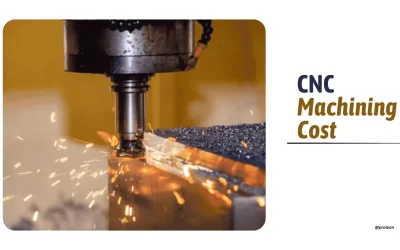
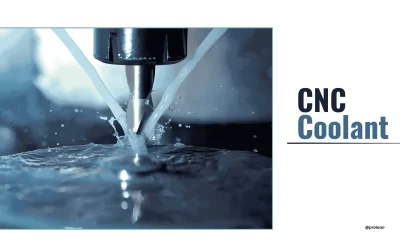
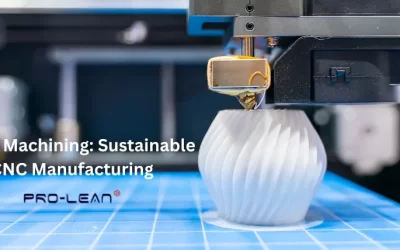
0 Comments